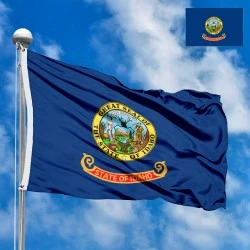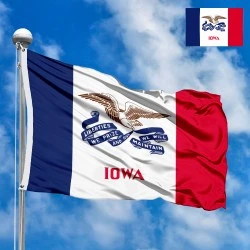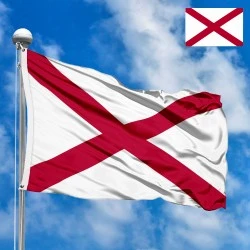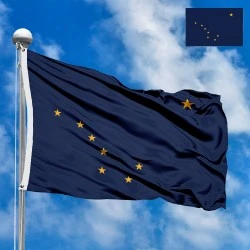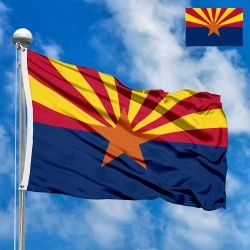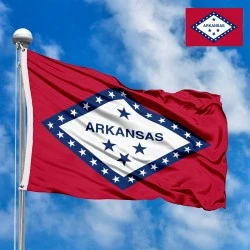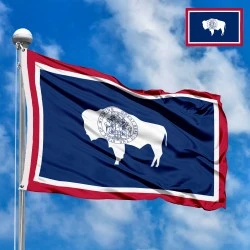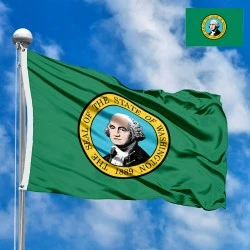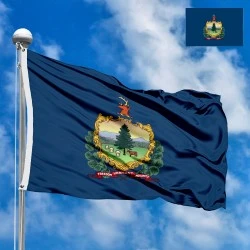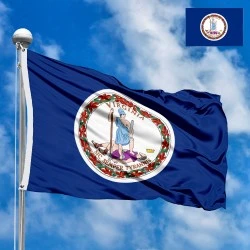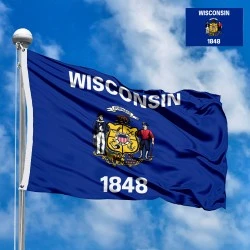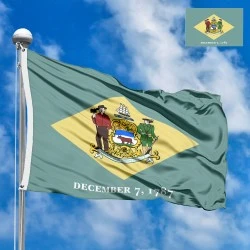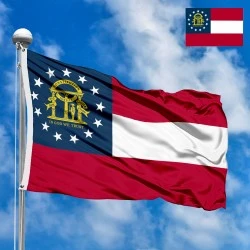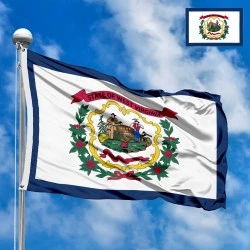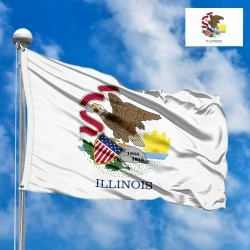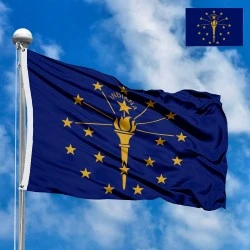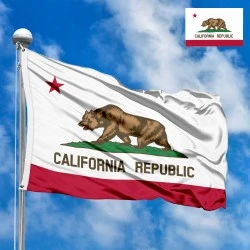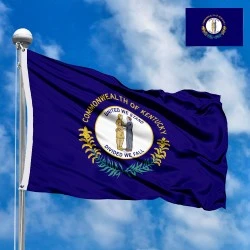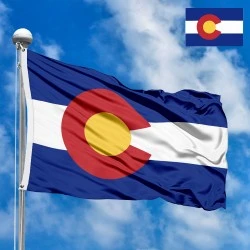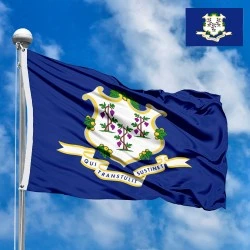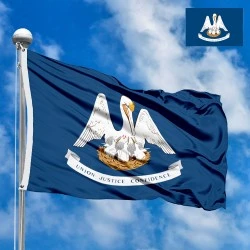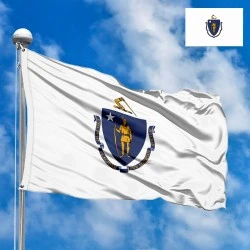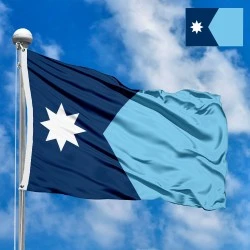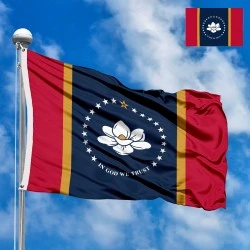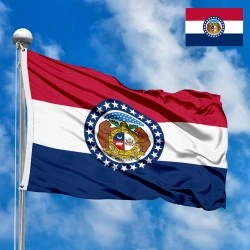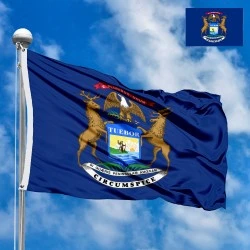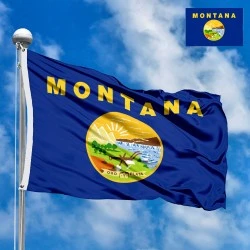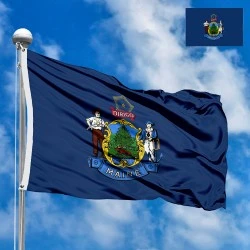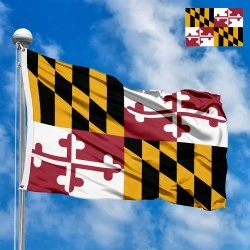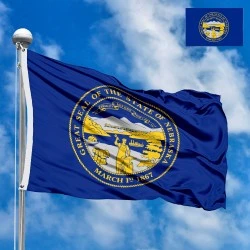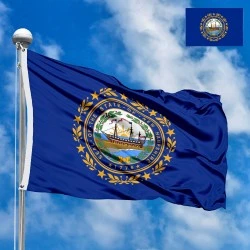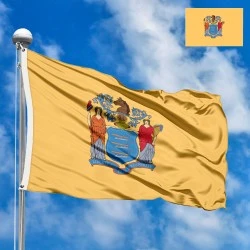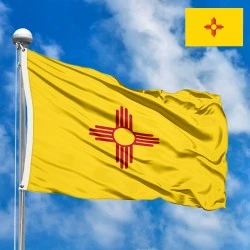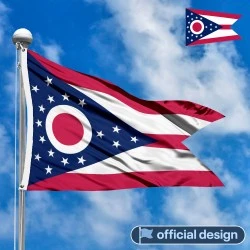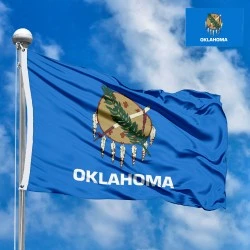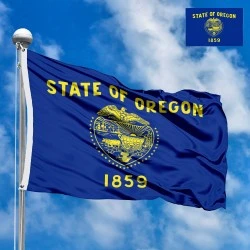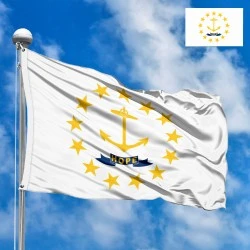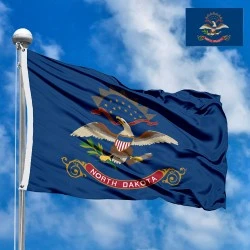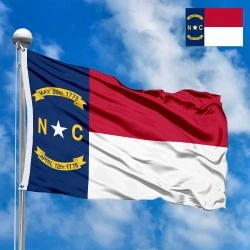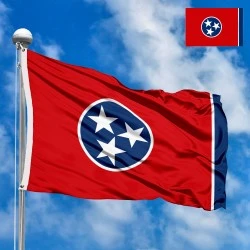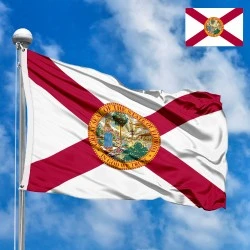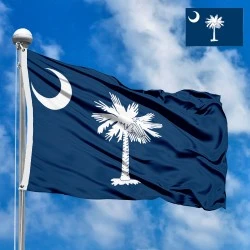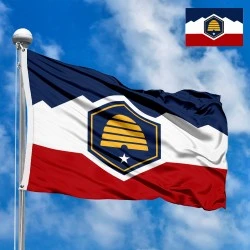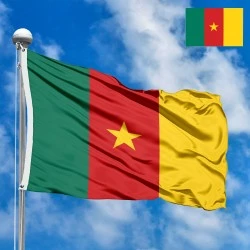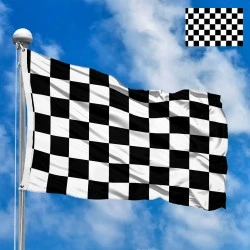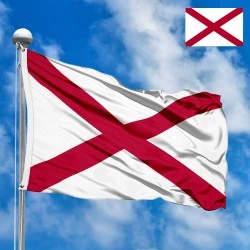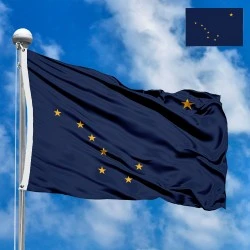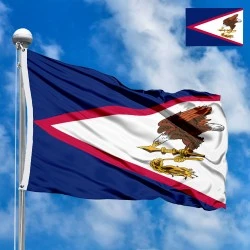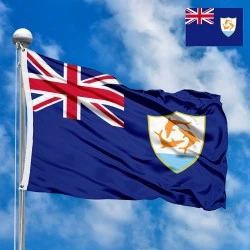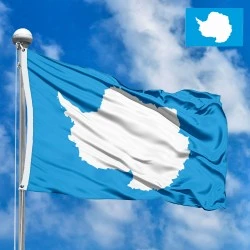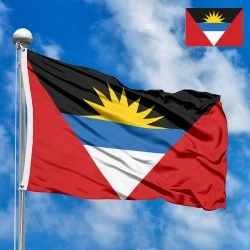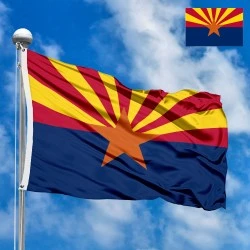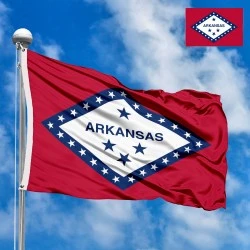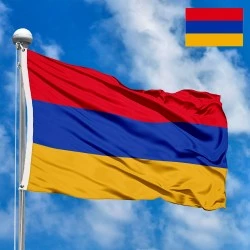Flag of Hawaii (US state)
- Flag Type: US States
- Proportions (official): 1:2
- Official name: State of Hawaii
- Local name: Hawaii
- Capital: Honolulu
- Large cities: Honolulu, East Honolulu, Pearl City
- Population: 1 438 416 (2024)
- Area (km²): 28 313
- Highest point: Mauna Kea (4,207 m)
- Lowest point: Pacific Ocean (0 m)
- Dialing code: +1 (808)
Flag Information
General information
Demography and Culture
Economy and communications
- All Flags
- Flags of Countries by Continent
-
Flags of Organizations
- Flags of UN countries
- Flags of the European Union countries
- Flags of NATO countries
- Flags of the countries of the Organization of Islamic Cooperation
- Flags of the countries of the Organization of American States
- Flags of the Arab League countries
- Flags of the African Union countries
- Flags of the countries of the Union of South American Nations
- Flags of the Commonwealth of Nations
- Flags of the countries of the Secretariat of the Pacific Community
- Flags of the Nordic Council countries
- Flags of the Caribbean Community
- Flags of the countries of the Association of Southeast Asian Nations
- Flags of the East African Community
- Flags of the countries of the Organization of Turkic States
- LGBT Community Flags
- Historical Flags
- Ethnic Flags
- Flags of the USA (states)
Description
The flag of the state of Hawaii is the most distinctive among all U.S. state flags, holding a unique place in vexillological history. It is the only state flag to feature a foreign country's national flag, the United Kingdom's Union Jack, and it is also the only one that once served as the national flag of an independent kingdom. This banner, officially adopted on May 20, 1845, tells a fascinating story of diplomacy, history, and the deep connection of its people to their island home.
Flag Design, Symbolism, and Colors
The Hawaii state flag is a masterful blend of influences, combining elements from two different world powers while celebrating its own unique identity.
-
The Union Jack Canton: The most prominent feature is the Union Jack in the upper hoist corner. This symbol represents the historical relationship between the Kingdom of Hawaii and Great Britain, acknowledging the protection and friendship offered by British explorers and diplomats in the early 19th century.
-
The Eight Stripes: The main body of the flag consists of eight horizontal stripes. These stripes alternate in color from the top, following the pattern of white, red, and blue. The eight stripes represent the eight main islands of the Hawaiian archipelago: Hawaiʻi, Maui, Oʻahu, Kauaʻi, Molokaʻi, Lānaʻi, Niʻihau, and Kahoʻolawe.
-
Symbolism of the Colors: The colors of the stripes are not just decorative; they are deeply symbolic. While there are varying interpretations, red is often said to represent the mana (spiritual power) and courage of the Hawaiian chiefs, white symbolizes purity and peace, and blue signifies the vast Pacific Ocean and the clear skies above the islands.
A Brief History of the Flag's Creation and Adoption
The story of the Hawaii flag begins in the early 19th century, at a time of great change for the Hawaiian Kingdom.
-
King Kamehameha I and Foreign Influence: After uniting the islands, King Kamehameha I sought to establish diplomatic relations with the world's major powers. British explorers like Captain George Vancouver became trusted advisors. It was during this period that the first Hawaiian flag was created.
-
A Diplomatic Compromise: The original flag included a simple British Red Ensign, but this caused a diplomatic incident when American traders protested its use. To appease both the British and Americans who were present in the kingdom, King Kamehameha I decided to commission a new flag that would incorporate elements from both nations' flags. The British Union Jack was retained, but the stripes were added to represent the islands and to differentiate the flag, symbolizing the kingdom’s neutrality and independence.
-
Consistency Through Transitions: This unique design proved to be a lasting symbol of Hawaiian identity. It remained the flag of the Kingdom of Hawaii, the Provisional Government of Hawaii (1893), the Republic of Hawaii (1894), the Territory of Hawaii (1900), and was officially readopted without change when Hawaii became the 50th U.S. state on August 21, 1959.
Historical Context and the State of Hawaii
The Hawaii flag is a vivid representation of a history unlike any other U.S. state. It speaks to a past of independence, monarchy, and a careful balance of foreign relations. While the Union Jack may seem out of place on an American state flag, its presence is a historical footnote, a reminder of the kingdom's early ties to Britain. The eight stripes are a profound and enduring connection to the physical and spiritual geography of the islands themselves, representing the unity of the archipelago. The flag's legacy is one of resilience and identity, telling the story of a culture that has maintained its unique character despite profound political changes.
Significance for Residents
For the people of Hawaii, the flag is much more than a state emblem; it is a powerful symbol of their heritage and history. It represents the sovereignty of the Hawaiian Kingdom, the unification of the islands under a single ruler, and the deep pride in being kānaka ʻōiwi (native Hawaiians) or a resident of the islands. The flag is a unifying symbol that transcends political changes, connecting modern-day residents to a rich and storied past. It is a reminder that while Hawaii is now part of the United States, its identity is uniquely its own.
Interesting Facts
-
The Hawaii state flag is the only U.S. state flag to feature the flag of another nation.
-
It is also the only U.S. state flag to have once been the national flag of an independent monarchy.
-
The number of stripes is precisely eight, corresponding to the eight main islands. Some early versions of the flag had more stripes, but the number was later standardized.
-
The original designer is believed to be Captain George Beckley, a British-born officer in the Royal Hawaiian Navy.
-
The flag's design was a stroke of diplomatic genius, allowing the Hawaiian Kingdom to remain neutral between the competing interests of Britain and the United States in the Pacific.
-
The flag is an enduring symbol of the Hawaiian people's resilience and their ability to honor their history while embracing their present.
In the demonstration images, full-size flags are shown with proportions of 2:3, and hand-held flags with proportions of 1:2.
Donation
Download
Completely free for commercial and non-commercial use (public domain).
You can freely use them in your news magazines, websites, software, mobile applications.
We appreciate a backlink to https://flagssite.com
Raster files - Flag of Hawaii (US state) (PNG, JPG)
 Waving flag
Waving flag
- PNG format (transparent background), 72dpi, dimensions in Pixels (px), aspect ratio 3:4.
- 15х20 px
- 30х40 px
- 60х80 px
- 120x160 px
- 240x320 px
 Sizes:
Sizes:
"v15" - image size (by height); if necessary, replace with available: v15, v30, v60, v120, v240.
!!! For resizing, use the Latin (eng) keyboard layout.
<img src="https://flagssite.com/flags/v15/20554.png" alt="Flag of Hawaii (US state)">
 Round flag
Round flag
- PNG format (transparent background), 72dpi, dimensions in Pixels (px), aspect ratio 1:1.
"d15" - image size (diameter); if necessary, replace with available: d15, d30, d60, d120, d240.
!!! For resizing, use the Latin (eng) keyboard layout.
<img src="https://flagssite.com/flags/d15/20554.png" alt="Flag of Hawaii (US state)">
 Rectangular flag 2:3
Rectangular flag 2:3
- JPG format, 72dpi, dimensions in Pixels (px), aspect ratio 2:3.
"h30" - image size (by height); if necessary, replace with available: h15, h30, h60, h120, h240, h360, h480.
!!! For resizing, use the Latin (eng) keyboard layout.
<img src="https://flagssite.com/flags/h30/20554.jpg" alt="Flag of Hawaii (US state)">


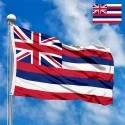
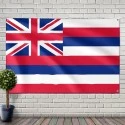
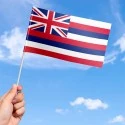


 Sizes:
Sizes:
 Sizes:
Sizes:
